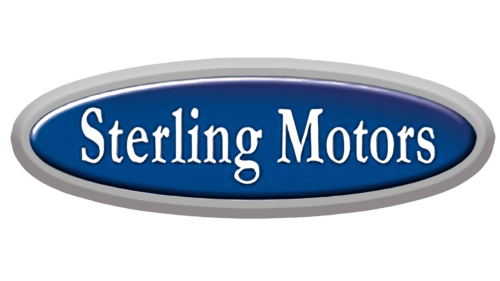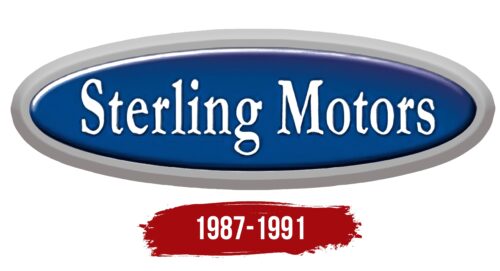The Sterling logo conveys the former glory of luxurious British cars that briefly shone in the American market. The emblem reflects the noble minimalism and enhanced comfort that distinguished these vehicles.
Sterling: Brand overview
| Founded: | 1987 – 1991 |
| Founder: | Austin Rover |
| Headquarters: | United Kingdom |
In 1987, the Austin Rover Group of the UK introduced Sterling, marking its entry into the US luxury automotive market. This new venture was born from a collaboration between Austin Rover and Honda, allowing Sterling to introduce models based on Honda’s products to North America. The brand’s inaugural model was the Sterling 825, resembling the Acura Legend. Following its debut, 1988 witnessed the launch of the Sterling 827, which took inspiration from the Honda Accord framework. This mid-size luxury sedan aimed to contend with stalwarts like Mercedes and BMW.
Yet, despite its ambitions, Sterling found it hard to carve out a niche in a market saturated by renowned German and Japanese luxury brands. By the dawn of the 1990s, Sterling’s foothold was shaky, with sales dwindling. Ultimately, Austin Rover decided to cease Sterling’s operations in the US by 1991, having sold merely around 14,000 vehicles during its brief tenure.
Sterling’s short-lived journey underscored the complexities and competition of the US luxury automotive space. By 1992, the brand was completely phased out. However, the legacy of Sterling vehicles lingered, with the Acura brand stepping in to ensure service and support for the existing Sterling owners.
Meaning and History
What is Sterling?
In 1987, Sterling Motor Cars, the North American arm of the esteemed Rover Group, made a resounding debut in the United States. This daring venture was facilitated by a tactical alliance with Honda of Japan, propelling the brand into a prominent spot in the American automotive landscape. Despite its relatively brief stint, Sterling vehicles left a lasting mark with their superior quality and performance, resonating with drivers until 1991.
Sterling, an extraordinary brand birthed from the joint efforts of Austin Rover and Honda, was conceived by the legendary British car manufacturer Austin Rover. Headquartered in the United Kingdom, Sterling’s base proudly showcased its British roots and design influences. With its distinctive and inventive design, Sterling symbolized the shared spirit of ingenuity and collaboration between Austin Rover and Honda.
1987 – 1991
The fundamental element of the Sterling logo is a refined oval. It is considered refined not for its robustness but for its elegance. It embodies the spirit of English aristocracy, noble manners, and a quest for comprehensive comfort. However, competition prevented the company from developing further, and its logo has frozen in time, showcasing the sophistication of luxurious cars now considered collectibles.
The name of the forgotten British brand is in the center of the narrow, horizontally placed ellipse. It is written in a classic font with tiny serifs, barely noticeable on the large, bold white letters. This inscription is non-aggressive, pleasant, and clearly visible against the blue background. The initial glyphs of each word are in uppercase, while the rest are in lowercase. The moderate combination of thin serifs and soft curves creates a soothing aura, instilling confidence in the brand’s cars.
The top of the oval is outlined in white, and the bottom in black. This unique contrast adds variety to the logo, brings it to life, and gives it dimension. Such restrained dynamism is characteristic of British nature, fitting harmoniously into the emblem’s design and conveying its authenticity and purely English charm.
There is also a large amount of gray color with a gradient ranging from ash to silver. This is mainly used for the frame, which appears convex due to the play of shadows and light as if it has a raised edge in the middle. This detail also transforms the drawn symbol into a realistic emblem, ready to adorn the hoods of the brand’s cars.




